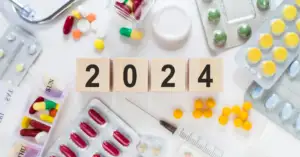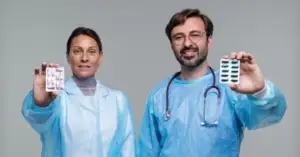In this day and age with the ever-evolving medical sciences, new discoveries and therapeutic interventions are reported almost every day. The injection has been an indispensable part of medicine practice for several years. With that, injections are a necessity for serving life saving treatments through administration directly into the blood, making the medicinal component available to act instantly. In the medical field, injections are essential for administering medications and vaccines directly into the body. They provide several benefits over other administration routes, such as oral or topical methods. Injections enable quicker delivery of medication into the bloodstream, resulting in faster therapeutic effects. This is particularly critical in emergency situations where prompt action is required.
In addition, injections ensure precise dosing accuracy, reducing the risk of under- or overdosing. Injections deliver the medicine directly into the bloodstream and make it 100% available. This results in increased drug potency which further enhances therapeutic action. Injections are beneficial because they provide a direct route for a drug to enter safely in the body without being affected by stomach acids or enzymes. Some drugs cannot survive the acidic environment of the stomach, so injections are crucial for providing fast and targeted treatment, ensuring the best possible results for patients.
There are different routes of administration of injections. These are as follows:
- Intramuscular (IM) injection: This type of injection needle is inserted deeply into the muscle. This route is typically used for medications that need to be absorbed slowly over time or when large doses are necessary.
- Subcutaneous (SC) injection: A shorter needle is used to administer the drug in the fatty tissue, just below the skin’s surface, allowing the medication to be absorbed slowly over a longer period of time.
- Intravenous (IV) injection: This involves delivering medication directly into a vein through a small catheter inserted into the bloodstream.IV injections provide rapid effects as they bypass digestion and quickly enter circulation. IV routes are often used during medical emergencies.
- Intradermal (ID) injections: Here the medication is injected just under the top layer of skin. ID injections are commonly used for allergy testing or tuberculosis screenings.
- Spinal or epidural injections target specific areas around the spine to provide localized anesthesia during surgeries or to manage chronic pain conditions.
Administering injections is a crucial component of healthcare that ensures all the medications and vaccines are delivered safely and effectively. To achieve the best outcomes for patients, medical practitioners must adhere to certain best practices when administering injections, such as those discussed below:
- Before administering injections on patients, it is crucial to follow hand hygiene protocol. Healthcare practitioners must thoroughly wash their hands or use an alcohol-based sanitizer to minimize the risk of introducing bacteria into the patient’s body.
- It is essential to use the correct needle type and size. This is in turn determined by the patient’s age and weight, the injection site, and the drug to be administered. Smaller gauge needles reduce pain and discomfort to the patient.
- In preparing injections, it is important that the syringes and vials are used in a sterile environment and the table surfaces are tidy and disinfected.
- It is important to inject medicine into the correct site of the muscle tissue or subcutaneous fat layers. Site-specific guidelines are meant to promote a good standard of care that avoids complications short of nerve damage and accidental intravenous administration.
- Safely disposing of used needles and other sharpened objects into appropriate containers after injections minimizes the chance of the injury resulting from sharps and limits the risk of transmitting infectious diseases due to contaminated needles.
In conclusion, injections represent an essential component of healthcare approach for proper and safe administration of medications and vaccines. Healthcare practitioners must adhere to and follow the best practices that would ensure that patients receive high quality care while achieving optimal patient outcomes. This also ensures that medications administered through injections are safe and effective. Following established protocols helps to guarantee positive patient outcomes every time they seek medical assistance.





